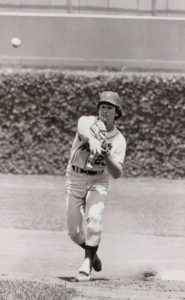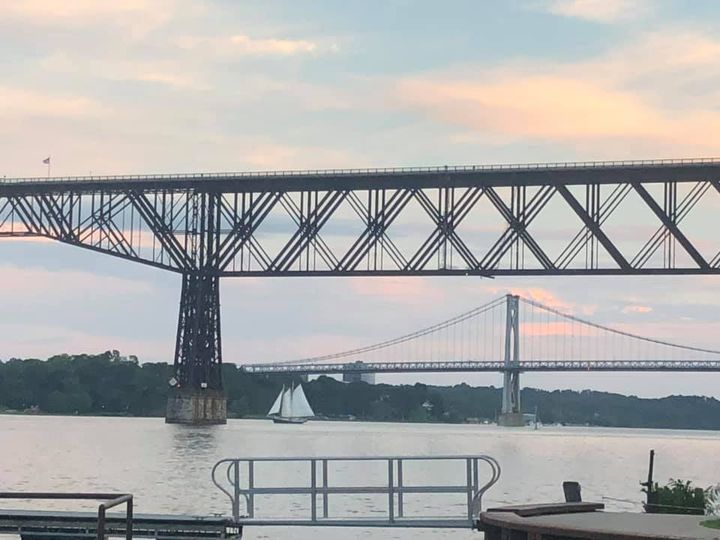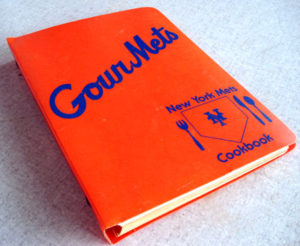The last time I did season-ending grading was in 2019. Reading what I wrote then—a rookie Pete Alonso, Edwin Diaz was a complete bust, missing person Jed Lowrie, and personal favorite Rajah Davis, who took an Uber from Scranton to Flushing and cracked a pinch-hit, three-run HR a couple of hours later. But there was quite a bit of irony from that writeup: “I can’t wait for next year.” That would be 2020. If I’d only known then, I would have bought 50 cases of toilet paper and invested in a company with a vast stockpile of surgical masks.
Flash ahead to 2023. Exasperation, not to mention a few tough deadlines, led me to skip my usual writeup of first-half grades in July. Last year I was annoyed enough about the abrupt ending of a 101-win season that I thought my final grades would have been overly harsh; so I skipped them. The 2023 Mets won 27 fewer games and their manager is out. David Stearns is the new president. I grew up a Mets fan, too, but I don’t deserve to run this team. Stearns is certainly qualified, but we’ll see if Stearns is worthy. He is now on the clock with some very impatient people watching everything he does.
Whether the Mets go all in or let the kids continue to grow, you can only hope 2024 is better. The 2023 rotation was erratic, the bullpen was mostly brutal, and many other facets of the game were off—on a recurring basis. The .238 batting average, second to last in the National League, no doubt played a key role as to why they were second to last in the NL East.
The Mets were 230 runs behind the Braves. Despite being fourth in the NL in home runs, they were still 92 behind Atlanta. Their on-base, slugging, and analytic numbers were middle of the pack, at best. The Mets were the eighth-worst team in baseball and now they can get a better draft pick. Yay! The 2023 season is a textbook case of how you get a manager fired, no matter how you want to set up the drama. This team only became watchable after they got rid of much of the talent that made them the most expensive team in history. Someone else will soon pass their record of payroll excess, but it may take time before a team with an F-you payroll stinks up a joint quite as badly as the F-in’ Mets did in 2023. The first two weekends of the season the Mets beat up on the Marlins. At the time I could not imagine a world in which that team was in the playoffs and the Mets were hopelessly out of it after a 7-19 June—a month that began with a sweep of the Phillies.
Buck Showalter will get a grade for 2023. David Stearns has not yet earned anything. Showalter won four Manager of the Year Awards—including one in 2023 with the Mets—deserved at least a face-to-face meeting with the new guy. Or maybe both sides decided it was better to get out in front of all this rather than drag it out. Having experienced many regime changes over the years, the old manager will be forgotten as soon as the new one is hired, especially if the team plays better. This was a forgettable year.
Buck knew what he was doing and whatever he did wrong wasn’t from a lack of preparation. He treated people with dignity. I wonder if he will get another chance to manage at age 67. Bobby Valentine was the last ex-Mets manager that any other major league team (in America) deemed worthy of hiring—and that came a decade after Bobby V.’s Mets swan song; the end result was an unmitigated one-year disaster in Boston. You’d like to think the next Mets manager would be someone another team might covet. Someday. No Mickey Callaways need apply.
Right now we will face down this miserable season where six National League teams make the postseason, yet the Mets were never in the conversation. They did the right thing to cut bait in July. Other teams that fooled themselves then and went for it are licking their wounds today—and gave up a nice chunk of their future (possibly even to the Mets). Those that used Mets castoffs for a quick October fix may yet regret their decision when they find themselves quickly bounced from the postseason big top. The four kids in the everyday lineup—Alvarez, Mauricio, Baty, and Vientos—whom I saw all play in person at the Syracuse Mets Opening Day in Worcester, brought some life to New York in the second half.
As for who makes this list, batters have to have at least 50 plate appearances to receive a grade. So that keeps us from handing out grades to Abraham Almonte, Michael Perez, and Gary Sanchez. Pitchers need at least 25 innings to qualify for a grade. This no-name army at least filled out the innings the Mets starters couldn’t navigate: Tommy Hunter, John Curtiss, Denyi Reyes, Reed Garrett, Sean Reid-Foley, Jimmy Yacobonis, Debbis Santana, Josh Walker, Sam Coonrod, Zach Muckenhim, Adam Kolarek, Anthony Kay, Vinny Nitoli, Edwin Uceta, Tyson Miller, and T.J. McFarland. These pitching minimums meant taking quite a few F’s off the board, but I think I still handed out more F’s than on any report card in the dozen or so years I have done this. A few D-minuses were generously given. Every F was earned.
2023 MetSilverman Report Card
Kodei Senga A Only Met to qualify for ERA title and placed second. Fanned 200. MLB rookie learned from his mistakes.
Joey Lucchesi A First Met to start 9 times and go undefeated (4-0). The question is why he made 14 starts in Triple-A?
Brooks Raley B+ Can’t undervalue a reliable lefty in the pen. Other than blowing save the day of the selloff, he did what was needed all year.
Pete Alonso B Eye-popping 46 HR, 118 RBI, but if he wants the big Mets contract, he must improve his .217 average and streakiness.
Francisco Lindor B He went 30/30, played every day, and led the team in many categories. Steady but streaky.
Brandon Nimmo B First year of big contract and played 152 games. Still one of my favorite players to watch play.
Jose Quintana B Spent first half injured; if only crafty lefty could have doubled his 13 starts.
Justin Verlander B Performed all right when healthy. Brought home a ton in trade. The better of the 40-year-old starters.
Francisco Alvarez B- A rookie catcher hitting 25 home runs is Amazin’. His defense was good and the offensive holes will hopefully fill in.
D.J. Stewart B- Faded the last week or two, but he came through often and filled in nicely for traded outfielders.
Tylor Megill B- A 5-inning starter but second in wins, starts, innings, BB, and HR. Only 27 and his best year yet.
David Robertson C+ Part A of Operation Marlin sent to Miami to mess with them. Part B involved groundscrew and umpires.
Adam Ottavino C+ Tied with Raley at 66 games. Shaky at times, but saved 12 of 15 games for team in need of stability.
Tommy Pham C+ He produced when no one else was doing anything. Once he was gone I thought he’d never shut up.
Ronny Mauricio C+ Raw but has more skills than I expected after many anointed him a savior. For once hype was justified.
Jose Butto C+ When brought back late in the season, this starter rang the bell despite little support.
Jeff McNeil C Batting champ last year showed versatility and good RF arm. Second in NL HBP was his main ’23 highlight.
Max Scherzer C Master of illusion with 9-4 record, 4.01 ERA, and 5.2 IP per start. Looked like BP while he was on hill.
David Peterson C None of the luck or polish of Scherzer, but I am glad he is still here and Max is not. He’s a lefty entering his prime.
Mark Canha C Dumped to Brew Crew and wound up in Oct. Couldn’t recapture whatever Canha magic existed in ’22.
Drew Smith C Somewhat reliable and throws hard. Managed to stay healthy and pitched 62 times.
Jeff Brigham C- Ate up 37.2 nondescript innings for a team whose starters often came out after 5 innings.
Mark Vientos C- I think either he or Baty will make it; not both. On a good day—of which there were too few—Vientos is a cheaper J.D. Davis.
Bret Baty C- I like lefty-hitting third baseman. Has a sweet swing and potential, but more work is needed.
Starling Marte C- It seems impossible he had 341 PA. Felt like he was absent since May.
Omar Narvaez C- Every team has to have a backup catcher. It’s nice when the guy hits left-handed and bats over .200.
Tim Locastro C- I have no idea how he hit .232, but he was good at drawing BB & HBP. A right-handed Ortega.
Rafael Ortega D+ A left-handed batting Locastro. Every time he walks you can see the pitcher get mad at himself.
Phil Bickford D+ He was OK compared to some of the other guys they had circling and cycling out of the pen.
Luis Guillorme D Guillorme is fun to have on a good team, but maybe there is a new chapter for him as someone’s coach.
Trevor Gott D “Mein Gott! Are we really bringing this guy into a one-run game!” Blew 4 of 5 save opps.
Carlos Carrasco D- Created enough good will in 2022 to pass, but few complained when he and his 6.80 ERA ended early.
Stephen Nogosek D- Sabermetrics seem to like him, but I didn’t like the Mets’ chances at winning when he came in.
Dominic Leone D- That the Mets got anything for him during the summer sale-athon is some shrewd trading.
Grant Hartwig D- They say wins by pitchers mean nothing, but this guy winning more games than Peterson feels so unfair.
Danny Mendrick F It was frustrating watching him instead of Mauricio, but Ronny needed just a little more seasoning.
Eduardo Escobar F Baty/Vientos and anyone else needed time at 3B. His trade was first sign of a possible selling mode.
Daniel Vogelbach F Some fans made him a scapegoat. That’s wrong, but he was not good and needs to go.
Jonathan Arauz F Not many great lefty bench options. Had some power and a good glove, but .136/.203/.288 puts you almost at the bottom.
Tomas Nido F I was a once a Nido fan. But getting a multi-year contract, then getting cut after .125/.153/.125 puts you at the bottom of the list.
Management
Buck Showalter C- Team seemed to play hard but still barely avoided 90 losses after 101-win season. Best of luck, Buck.
Billy Eppler C Lots of money to play with, but GM never got needed parts to fill Edwin Diaz void. We’ll see how well he did on trades in 2025.

 Doug Flynn (Photo courtesy of Jacob Kanarek, From First to Worst)
Doug Flynn (Photo courtesy of Jacob Kanarek, From First to Worst)

